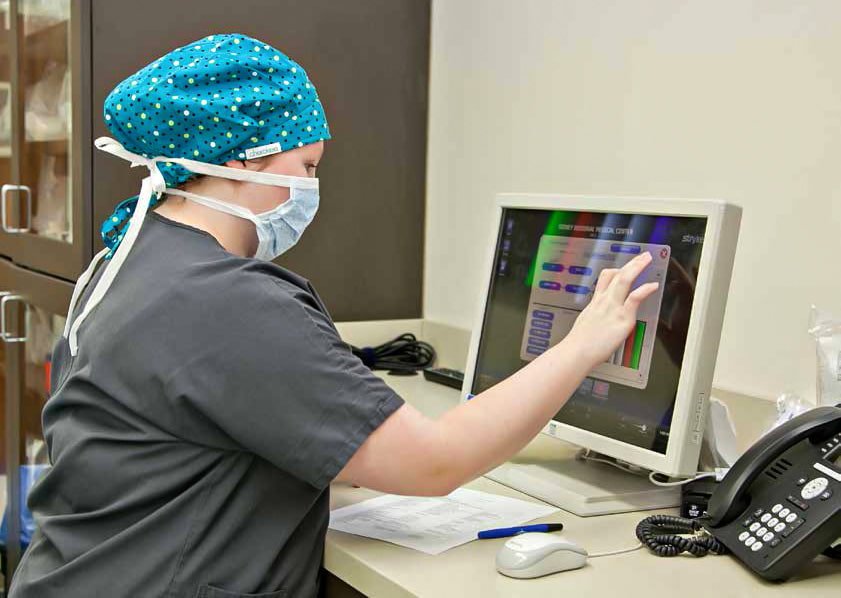Great Plains Communications is proud to highlight our business customers, Sidney Regional Medical Center (SRMC) based in Sidney, NE.
Sidney Regional Medical Center (SRMC) is a Critical Access Hospital in Sidney that serves a seven-county area in the southern Nebraska Panhandle. Together with its partners, SRMC provides a wide array of services including some not traditionally found in a rural community.
Patients have access to Acute Care, Critical Care, 24-hour Emergency Room, Physicians Clinic, Walk-in Clinic, Surgical Services, Home Health and Hospice, Extended Care, Assisted Living and more. SRMC currently has over 390 employees, and its medical staff includes four family practice physicians, two general surgeons, a urologist, a hospitalist, 10 certified physician assistants and nearly 20 visiting providers who specialize in areas such as ENT, cardiology, gastroenterology, orthopedic surgery, pain management and podiatry.
Internet Technology Benefits Patients and Staff
As is true for hospitals across the county, Internet technology is helping SRMC improve the quality and efficiency of health care. To facilitate this, Great Plains Communications currently provides SRMC with:
- Connections to Fort Collins for imaging
- Connections to SRMC’s Chappell clinic
- Redundant fiber routes in and out of Sidney for Direct
- Internet Access
- Backup for their RNHN (Rural Nebraska Healthcare
- Network) route
Jennifer Brockhaus, Chief Information Officer, says, “There are many examples of how our high-speed Internet connections are enhancing health care. We can send radiology images more quickly to our radiologist due to the direct fiber connection to Fort Collins. Providers at our satellite facility in Chappell can access patient charts more efficiently and document in real time. SRMC is also able to electronically fill prescriptions including those for controlled substances.”
Another example is the Patient Portal offered by SRMC. It’s part of the national initiative for patients and providers to use electronic health records (EHR) in order to improve communication and quality of care as well as ensure the information is secure and accessible at any time. Not only can patients access their health records electronically via the Patient Portal, they can also schedule appointments, pre-register, pay for services, see tests results and send or receive communication to their health care provider.
Pleased With Great Plains Communications
“Having our own dedicated fiber line from Great Plains Communications that connects all of our facilities is a huge factor for SRMC. It allows us to have one data center and equips us to work more efficiently. You have no idea how amazing this piece is to overall performance,” Brockhaus notes.
She adds, “What we appreciate most about Great Plains Communications is the minimal downtime. I can count on one hand how many times we’ve been down, and it’s usually just for a matter of minutes. I also appreciate that Great Plains Communications is always ready to assist SRMC when we need to expand our Internet services. We get calls from other health care facilities asking who we use for our dedicated fiber line, and we enthusiastically refer them to Great Plains Communications.”
Telemedicine is Coming
What does Brockhaus expect “the next big thing” in technology to be for SRMC? She replies, “It will be telemedicine. SRMC is working on getting remote sites set up in the small towns around Sidney so patients will be able to go to these towns and ‘visit’ a primary care provider through the Internet. We’re also working on providing patients with the ability to stay at home and interact with a provider via their phone, tablet or computer. The ultimate goal is to enable patients to use telemedicine as an alternative to having to travel to a large city for specialty services. When patients see their local primary care provider, we’ll be able to block out an extra amount of time, have web cameras in the exam room, and include both the primary care provider and the specialist on a video call. Telemedicine is more convenient for the patient and expands access to specialty services.”
